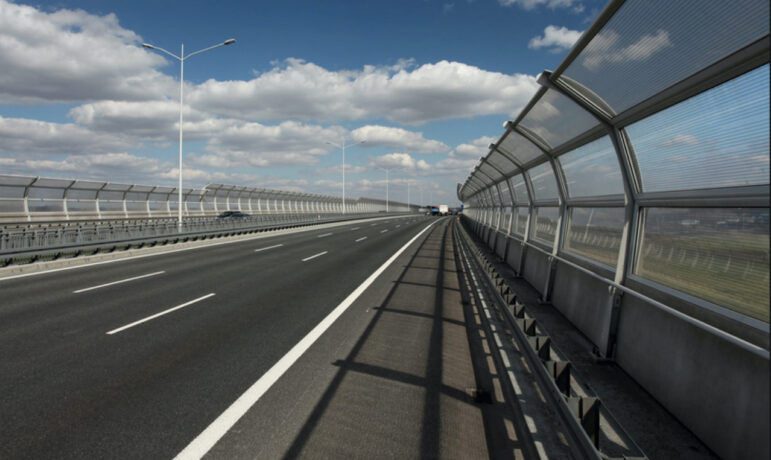Submitted by Greg Piccininno, president of stop95noise.org
Jim Cameron makes some interesting arguments against sound barriers. (TALKING TRANSPORTATION: Solution to highway noise is not to create a walled canyon paid for by others Dec 20, 2021)
It is a shame that most of his assertions are factually wrong, not backed by science, nor economically sound.

I will start with his question, “Do you have sympathy for people who move near airports?” He does not, so I assume he is deaf to the situation of middle and lower income people. People don’t choose to live by noise, most of the time it is an economic necessity.
Further, today many of those who now hear noise from the interstate highways like I95, did not hear this a decade ago. When I95 cut through the most populated towns in CT in 1958, the traffic was a fraction of today and today’s 150,000 cars that enter CT from NY on I95 daily is 2.5x the number two decades ago.
Does Mr. Cameron have sympathy for people in flood zones? Here in Fairfield many flood zones are mostly occupied with waterfront mansions or mansions. My Google search did not turn up an article by Mr. Cameron complaining about the repeated bail out of the rich after every hurricane or tropical storm. How many rail cars does a billion buy?
That aside. Let’s address his issues with noise barriers:
First, he wants the people who benefit from noise barriers to pay. That is exactly what happens. Houses near noise barriers go up in value and assessments, according to an almost universal model between value and each dBa of noise reduction.
Further, after a few years, the cost of noise remediation pays back the investment and since some remediation can last up to 20 years, the additional taxes can reduce mill rates, fund public transportation or schools. Whatever the community wants. I agree with Mr. Cameron, let those who benefit pay. I agree, but the manner he presents the argument leads one to believe we will not and it’s a transfer of wealth. He is ill informed on the issue, the research, and the actual experience of property prices in areas where noise remediation is implemented is solid.
Graffiti. This is a false argument. It is a scare tactic. I have lived in CT since 2005 and I have yet to see graffiti on any sound barrier in the area.
What Mr. Cameron does not talk about are the positive health and well-being sound barriers bring to communities and schools. Noise is a non-so silent killer (AFib is a biggie) and it hurts learning, hence possibly perpetuating lower income life cycles since those are the people who tend to live by the noisiest areas.
Mr. Cameron also does not address the increase in traffic which has occurred over time. Amazon is not shipping by rails and since most highway noise is from tires, more trucks with bigger tires with deeper grooves equals more noise. Wider tires equal more noise. Run flat tires equal more noise. The modern car has a quieter engine but more noisy tires. Even EVs make noise over 20 miles an hour because their tires displace air.
Air Pollution. According to the CDC, noise barriers, not quiet pavement, cut down the amount of Particulate Matter 2.5 (PM2.5) by 50%. PM2.5 is the stuff that kills you and causes increase cases of childhood asthma. It also travels for miles from the highway so while those near the highway will pay for this improvement in air, communities’ miles away will benefit. I am sure those who live near highways are willing to give Mr. Cameron, his elite friends and the Long Island Sound, this benefit for free.
Finally with regards to sound barriers, Europe and parts of the US are using transparent sound barriers which allow natural light through. Yes, wood barriers are bad and that is why no DOT uses them anymore. The CT DOT exclusively uses concrete.
There are alternatives to noise barriers and if CT would shift from using asphalt mixed with recycled roofing shingles to asphalt mixed with recycled tires, there is a reduction in sound. It’s not 12 dBa as Mr. Cameron claims, but it is part of a solution that mixes noise reducing asphalt, sound barriers, and noise reducing bridge joints to create a quieter environment that protects the health and well-being of all CT residents, rich or poor. We could insulate people’s houses better, but don’t the children want to play outdoors, isn’t that part of what having a healthy childhood is about?
Unfortunately, Mr. Cameron should have done his research because he would have realized that our state one of the few that has yet to incorporate noise remediation in Type II and Type III projects. Mr. Cameron, an extra rail car will not reduce noise and air in any significant way. There is no real payback from an extra rail car. Besides, tax payers subsidize all rail.
I am the President of stop95noise.org. We are a local group committed to changing the way CT deals with noise pollution so that our state can compete with our neighbor states like NY and MA in quality-of-life matters. We welcome a dialogue with Mr. Cameron if he wants.